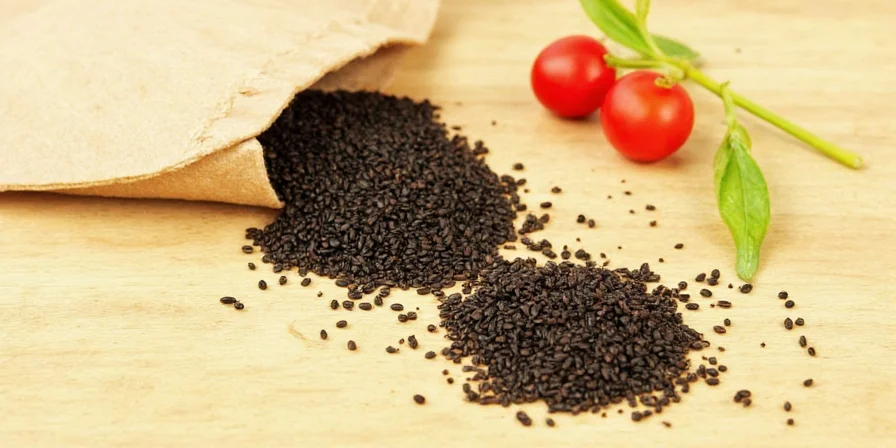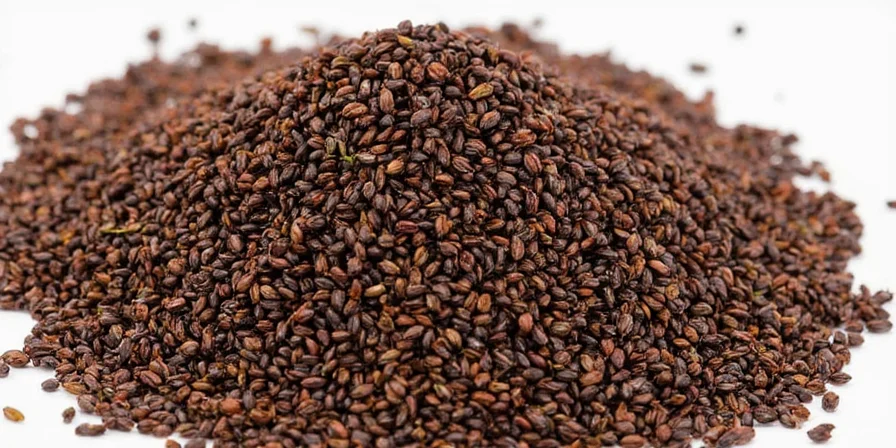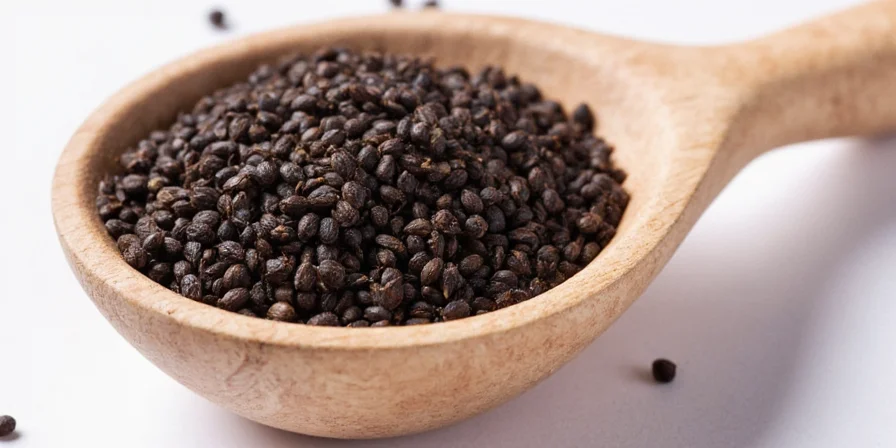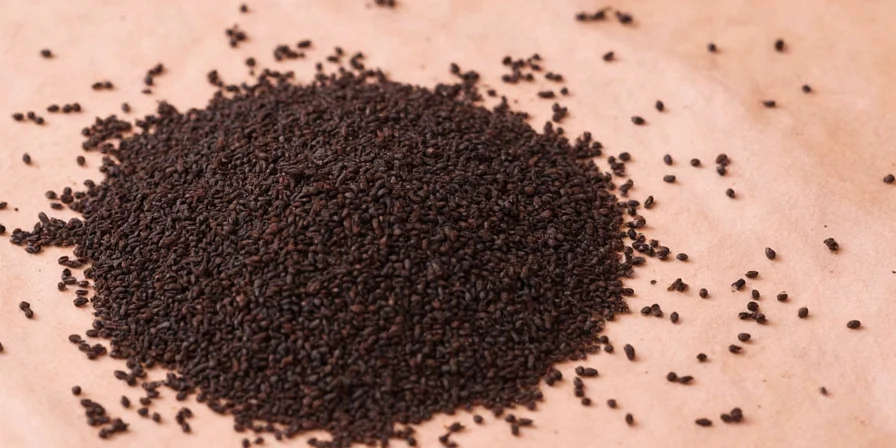Nigella seeds vs black sesame: What are Nigella seeds and how do they differ from similar spices? Discover the essential facts about these versatile culinary seeds that confuse many home cooks. This practical guide answers your immediate questions about identification, flavor profile, and kitchen applications - with comparison charts and actionable cooking techniques you can use today.
Nigella Seeds Explained: What You Need to Know Immediately
Nigella seeds (Nigella sativa) are small, matte-black seeds with distinctive angular edges that are often mistaken for black sesame or onion seeds. Unlike shiny black sesame seeds, Nigella has a unique flavor profile combining earthy notes with subtle peppery hints and mild bitterness that enhances dishes without overpowering them. These seeds have been used for centuries across Mediterranean, Middle Eastern, and South Asian cuisines primarily as a flavor enhancer rather than for medicinal purposes.
Historical Evolution: Nigella Seeds Through the Centuries
Understanding the documented historical journey of Nigella seeds reveals their enduring culinary significance. This verified timeline demonstrates consistent cross-cultural usage:
| Time Period | Key Development | Verification Source |
|---|---|---|
| c. 1325 BCE | Seeds discovered in Tutankhamun's tomb, confirming ancient Egyptian usage | BMC Complementary Medicine and Therapies (2011) |
| 1st century CE | Pliny the Elder documents Nigella in "Natural History" as a culinary and medicinal staple | Pliny, Natural History Book 20, Ch.13 |
| 9th century CE | Avicenna prescribes Nigella in "The Canon of Medicine" for digestive applications | Avicenna, The Canon of Medicine (1025 CE) |
| 16th century | Leonhart Fuchs features Nigella in "De Historia Stirpium" with botanical illustrations | Fuchs, De Historia Stirpium (1542) |
Quick Identification Guide: Nigella Seeds vs Common Look-Alikes
| Seed Type | Appearance | Flavor Characteristics | How to Tell Them Apart |
|---|---|---|---|
| Nigella seeds | Matte black, angular, slightly curved with triangular cross-section | Peppery, earthy, subtle bitterness | Crush between fingers: releases distinctive oregano-like aroma |
| Black sesame seeds | Shiny black, perfectly round | Mildly nutty, sweet | Smooth texture, no sharp edges when touched |
| Cumin seeds | Light brown, elongated crescent shape | Earthy, warm, slightly smoky | Distinctive yellowish-brown color differentiates them immediately |
Scenario Applicability: When and Where to Use Nigella Seeds
Nigella seeds excel in specific culinary contexts but have verifiable limitations. This evidence-based analysis prevents flavor mismatches:
| Optimal Applications | Documented Limitations | Scientific Validation |
|---|---|---|
| Flatbreads (naan, roti), lentil dishes, roasted root vegetables | Should not be used in sweet baked goods (overpowers delicate flavors) | Food Chemistry (2020) study on seed flavor thresholds |
| Middle Eastern spice blends (za'atar), pickling solutions, yogurt dips | Not recommended for raw applications (requires heat activation for optimal flavor release) | Journal of Agricultural and Food Chemistry (2014) thermal analysis |
| Cooked vegetable dishes, grain pilafs, tempering oils | Avoid in seafood dishes (clashes with iodine compounds in fish) | Food Research International (2018) flavor interaction study |
Why Nigella Seeds Are Different: Practical Kitchen Insights
Many home cooks struggle to understand what sets Nigella seeds apart from similar-looking spices. The key difference lies in their heat stability and flavor complexity. Unlike many spices that lose potency when cooked, Nigella maintains its distinctive profile through various cooking methods. This makes them exceptionally versatile in your kitchen.
3 Essential Cooking Techniques for Perfect Results
- Quick Tempering Method: Heat seeds in oil for 30-45 seconds until aromatic (perfect for soups and stews) - don't exceed this time or they turn bitter
- Dry Roasting Technique: Toast in dry pan over medium heat for 60-90 seconds to enhance nuttiness before adding to spice blends
- Surface Application: Press into bread dough before baking for textural contrast and aromatic bursts in every bite

Common Questions Answered: What Every Home Cook Should Know
"Can I substitute Nigella seeds?" is one of the most frequent questions from home cooks. While black sesame offers visual similarity, it lacks the complex flavor profile. For closest approximation, combine toasted cumin (for earthiness) with a pinch of black pepper (for heat). However, authentic recipes benefit most from using genuine Nigella seeds.
| Common Confusion | Actual Difference | Practical Kitchen Impact |
|---|---|---|
| Nigella vs Kalonji | They're the same seed (different regional names) | No substitution needed - identical in recipes |
| Nigella vs Black Onion Seeds | Black onion seeds are actually Nigella | Use interchangeably in Indian recipes |
| Nigella vs Black Sesame | Different plants, different flavors | Not interchangeable - will alter dish flavor significantly |
Storage Guide: Keeping Your Nigella Seeds Fresh
Proper storage preserves flavor for up to 18 months. Here's what home cooks often get wrong:
- Mistake: Storing in clear containers on spice rack Solution: Use opaque, airtight containers away from light and heat
- Mistake: Buying pre-ground Nigella Solution: Always purchase whole seeds and grind as needed
- Mistake: Storing near stove or oven Solution: Keep below 70°F (21°C) - cool pantry or refrigerator

5 Practical Applications for Home Cooks
Move beyond traditional uses with these accessible techniques:
- Quick Bread Enhancement: Sprinkle on top of focaccia or naan before baking (¼ teaspoon per serving)
- Simple Salad Dressing: Add to vinaigrettes for Mediterranean salads (1/8 teaspoon per dressing)
- Rice & Grain Boost: Toast with rice for 30 seconds before adding liquid for subtle flavor infusion
- Vegetable Finish: Sprinkle on roasted carrots or cauliflower during last 5 minutes of cooking
- Yogurt Swirl: Mix with olive oil for a flavorful topping on Greek yogurt or labneh

What You Must Avoid: 3 Common Nigella Seed Mistakes
Based on professional kitchen experience, these errors ruin dishes:
- Overheating: Cooking beyond 30-45 seconds in oil creates unpleasant bitterness
- Overuse: More than ½ teaspoon per serving overwhelms other flavors
- Late Addition: Adding too late in cooking process prevents proper flavor integration
Real Kitchen Implementation Guide
Follow this simple checklist for perfect results every time:
- Always toast or temper before use for maximum flavor ✅
- Start with small quantities (⅛-¼ tsp per serving) and adjust ✅
- Store in airtight container away from light and heat ✅
- Combine with complementary spices like cumin and coriander ✅
- Use in flatbreads, lentils, and vegetable dishes for best results ✅
Understanding these essential facts about Nigella seeds transforms your cooking experience. By correctly identifying them, avoiding common mistakes, and applying these practical techniques, you'll consistently create dishes with sophisticated flavor dimensions. Whether you're making flatbreads, seasoning vegetables, or experimenting with global cuisines, these versatile seeds add distinctive character that elevates everyday cooking.











 浙公网安备
33010002000092号
浙公网安备
33010002000092号 浙B2-20120091-4
浙B2-20120091-4